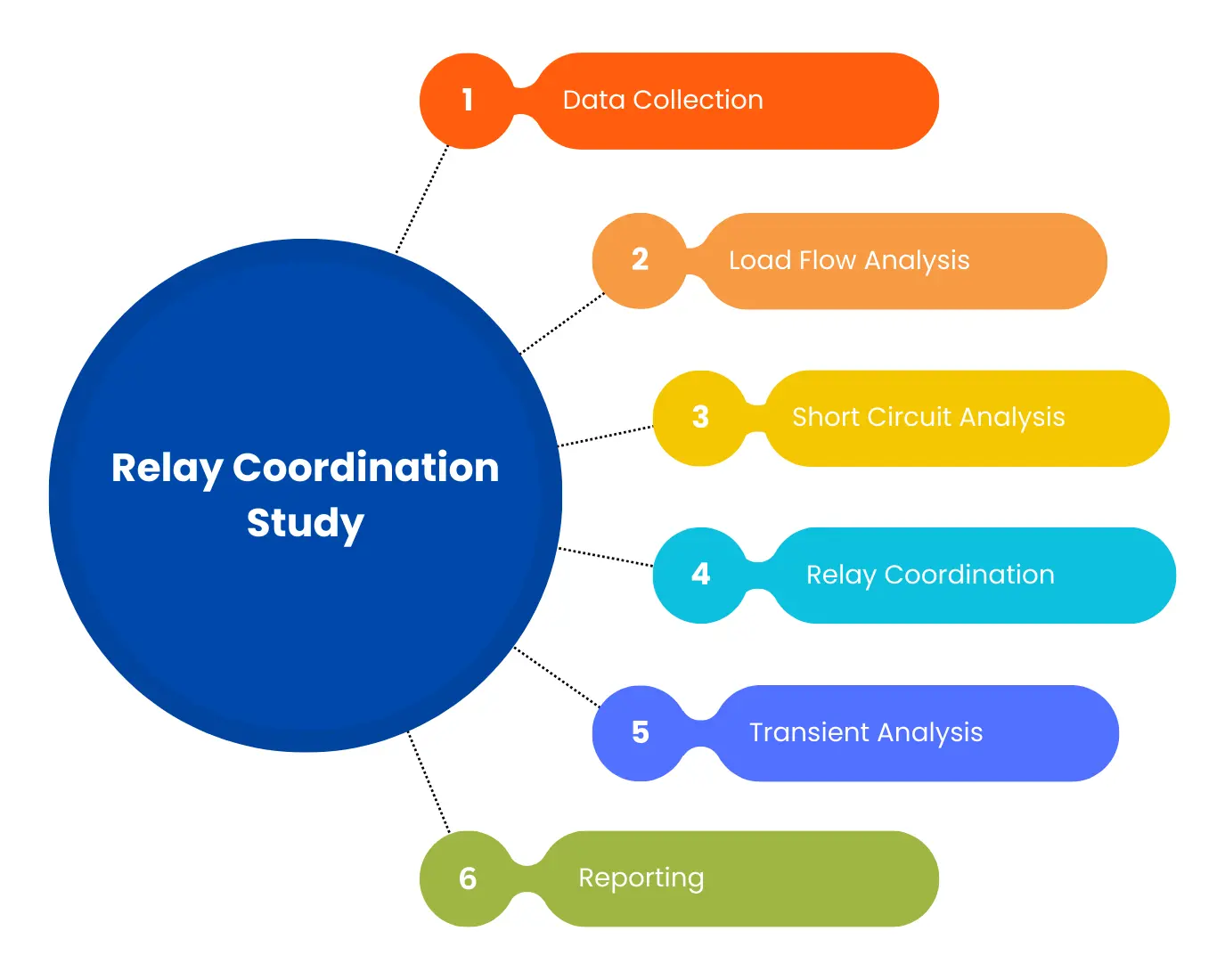RELAY COORDINATION STUDIES
WHAT IS RELAY COORDINATION STUDIES ?
A Relay Coordination Study is a crucial engineering analysis that ensures the protection devices in your power system operate selectively and in a timely manner during faults. The goal is to isolate only the faulted section while keeping the rest of the system running smoothly—preventing unnecessary power outages and equipment shutdowns.
In modern electrical networks, particularly those involving multiple substations, motors, and transformers, achieving proper coordination is essential for system stability, asset safety, and minimal service interruptions.
Objective of Relay Coordination
- Ensure selective isolation of faults
- Prevent cascading trips of upstream devices
- Prevent cascading trips of upstream devices
- Optimize response time of protective relays
- Improve system reliability and service continuity
- Comply with IEEE, IEC, and utility standards
Key Technical Parameters Analysed (Using ETAP)
- Pickup Currents and Operating Time of each relay
- Time-Current Characteristic (TCC) Curves
- Coordination Margin between primary and backup devices
- CT Ratio Selection and Saturation Check
- Definite Time vs Inverse Time Relay Characteristics
- Motor Starting & Inrush Protection Settings
- Breaker Clearing Time Integration
- Zone of Protection Overlap Analysis
ETAP’s coordination tools allow real-time visualization and adjustment of relay settings for optimal operation.
Importance of Proper Coordination
Poorly coordinated protection systems can result in:
- Unnecessary trips of upstream breakers
- Increased outage durations
- Equipment damage due to delayed fault clearing
- Nuisance tripping from motor starting or transformer energizing
Steps Involved in Relay Coordination
- System Modelling in ETAP with accurate load, generation, and topology details.
- Fault Simulation to determine maximum or minimum fault current scenarios.
- Relay Settings Input from calculated relay setting values.
- TCC Plotting and Analysis to identify overlaps or delays.
- Setting Optimization to ensure proper sequence of operations.
- Validation and Compliance with industry standards.
Our Expertise
SPTPL, we deliver precise Relay Coordination Studies using advanced tools and standards-compliant methodologies. Our engineers:
- Analyse system topology to determine ideal relay placements
- Optimize settings for minimal operating time without nuisance tripping
- Provide detailed reports, TCC curves, coordination tables, and setting files
- Whether it’s a greenfield industrial plant or an existing complex facility, we ensure your protection system is intelligent, responsive, and robust.

